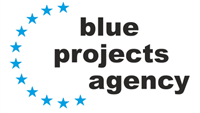[:cs]Nedávno byl novelizován zákon o investičních pobídkách. Smyslem tohoto zákona je podporovat technologické investice v České republice. Podporovány jsou investice do budování a rozšiřování technologických center, center strategických služeb a podniků zpracovatelského průmyslu. Za technologická centra jsou považovány subjekty se zaměřením na aplikovaný výzkum, vývoj a inovace technicky či jinak vyspělých výrobků, technologií a výrobních procesů, včetně tvorby a inovace jejich softwaru. Centry strategických služeb se rozumí centra pro tvorbu softwaru se zaměřením na tvorbu nového nebo inovace stávajícího softwaru, dále jsou podporována datová centra se zaměřením na ukládání, třídění a správu dat, a rovněž jsou podporována opravárenská centra se zaměřením na opravu technicky vyspělých zařízení. V neposlední řadě jsou také podporována centra sdílených služeb se zaměřením na převzetí řízení, provozu a administrace vnitřních činností od ovládající nebo ovládané osoby nebo od smluvních partnerů, pro které nejsou tyto činnosti předmětem podnikání.
Nově budou parametry podpory – zejména její výše – stanovovány vládním nařízením a nebudou nadále obsaženy přímo v zákoně. Vláda tak bude moci pružně reagovat na změny na trhu. Aktuálně platné nařízení vlády stanovuje kvalifikační podmínky. Tyto podmínky jsou různé pro malé, střední i velké podniky.
Tak například v technologických centrech je od velkých podnicích vyžadována minimální investice 10 mil Kč, přičemž alespoň 50 % prostředků musí být investováno do nových strojů a současně je požadováno vytvořit minimálně 20 nových pracovních míst. U malých a středních podniků (MSP) jsou kvalifikační požadavky poloviční.
U center strategických služeb je požadováno od velkých podniků vytvoření minimálních počtů nových pracovních míst, a to 20 pro centra vývoje SW, 20 pro datová centra, 50 pro hi-tech opravárenská centra a 70 pro opravárenská centra. U MSP jsou kvalifikační požadavky opět pouze poloviční.
Ve zpracovatelském průmyslu na pobídku dosáhnou pouze ty velké podniky, které investují minimálně 100 mil. Kč, přičemž alespoň 50 % prostředků investují do nových strojů. MSP mají kvalifikační požadavky poloviční. Zajímavé je, že se tyto kvalifikační limity snižují pro všechny příjemce bez rozdílu velikosti na polovinu při realizaci investice v postižených regionech nebo zvýhodněných průmyslových zónách. Postižené regiony i průmyslové zóny jsou vymezeny zvláštní mapou.
Vedle minimálních investic požaduje vládní nařízení nově splnění podmínky vyšší přidané hodnoty v rozvinutých regionech. Tato podmínka má řadu parametrů.
Tak především musí být zajištěno, že min. 80 % zaměstnanců bude mít do 7 resp. 12 měsíců od zveřejnění alespoň průměrnou mzdu. Bere se na zřetel průměrná mzda vyhlášená Českým statistickým úřadem v kraji, kde se investice realizuje. Tato podmínka platí pro velké podniky i MSP.
- Současně by měl podnik požadující investiční pobídku ve zpracovatelském průmyslu prokázat, že má uzavřenu smlouvu o spolupráci nejméně s jednou výzkumnou organizací, která je zapsána v seznamu výzkumných organizací, že s touto organizací spolupracuje v oblasti výzkumu a vývoje a na tuto spolupráci ode dne předcházejícího 2 roky předložení záměru získat investiční pobídku vynaložil prostředky nejméně v hodnotě 1 % předpokládané hodnoty celkových způsobilých nákladů uvedených v záměru získat investiční pobídku. Zároveň by měl podnik dodržet podíl zaměstnanců s vysokoškolským vzděláním v místě realizace investiční akce nejméně v úrovni 10 %, nebo
- by měl podnik prokázat, že zaměstnává a bude zaměstnávat min. 2 % spolupracovníků v oblasti výzkumu a vývoje (V&V), nebo prokáže že
- pořídil strojní zařízení, které je nebo bude využíváno převážně v (V&V), přičemž toto strojní zařízení bylo pořízeno za tržní cenu, nebylo vyrobeno více než 2 roky před zahájením jeho pořizovaní, nebylo před jeho pořízením předmětem účetních odpisů, nebylo uvedeno do užívání dříve než 2 roky před předložením záměru získat investiční pobídku a nebylo zahrnuto do způsobilých nákladů v rámci investiční akce, a to nejméně v hodnotě 10 % předpokládané hodnoty celkových způsobilých nákladů uvedených v záměru získat investiční pobídku.
Výše uvedené 3 podmínky však nejsou v nařízení zcela jednoznačné co do provázanosti a proto uvádíme jejich aktuální interpretaci dle agentury Czechinvest.
Maximální výše investiční pobídky je dána regionální mapou veřejné podpory, která definuje její maximální velikost pro velký podnik v úrovni 25 %, pro střední podnik 35 % a pro malý podnik 45 % ze způsobilých výdajů. Způsobilým výdajem jsou buďto realizované investice nebo vydané mzdové prostředky v rámci řádně podaného a detailně popsaného projektu v žádosti. Mzdové prostředky nelze uplatnit jako způsobilý výdaj v rámci zpracovatelského průmyslu.
Investiční pobídka sama o sobě není dotací, ale slevou na dani z příjmu. Předpokládá se, že investice přinese žadateli významné budoucí příjmy, a tedy i zvýšenou budoucí daňovou povinnost. Znamená to, že žadatel musí po realizaci projektu vytvářet dostatečný zisk, který podléhá dani z příjmu. Pokud žadatel nerealizuje dostatečný zisk, není pro něj sleva na dani atraktivní, protože žádnou slevu (pobídku) neuplatní. V dalších 10 letech od podání investiční pobídky si může příjemce snižovat svou daňovou povinnost až do výše přiznané investiční pobídky, která je ale stále omezena regionální mapou a skutečnou výší vynaložených uznatelných nákladů.
Daň z příjmů si nemůže příjemce pomocí pobídky snižovat na nulu, ale fixuje si stávající daňovou povinnost, kterou má povinnost platit po celou dobu čerpání investiční pobídky. Pobídka se uplatňuje na zvýšenou daňovou povinnost, která plyne ze zvýšeného zisku po realizování investice. Jakmile je pobídka vyčerpána, začne firma platit daň z příjmu v řádné výši. O investiční pobídky lze žádat opakovaně.
Zvláštní podmínky platí pro velké investice označované strategická investční akce. Zde je vedle slevy na dani možní získat přímou finanční podporu – dotaci a to až do výše 20% resp. 10% uznatelných nákladů. Přímá finanční podpora může dosáhnout až max. absolutní výše 1,5 mld. Kč.
Téma veřejných podpor a zejména investičních pobídek je provázané s daňovou legislativou a vyžaduje pečlivý, předem promyšlený soubor kroků. Pro podání žádosti i administraci projektu investiční pobídky je vhodné spolupracovat se zkušenými dotačními a daňovými poradci.[:en]The Investment Incentives Act has recently been amended. The purpose of this Act is to support technological investments in the Czech Republic. Investments in the construction and expansion of technology centers, strategic service centers and manufacturing companies are supported. Technological centers are entities with a focus on applied research, development and innovation of technically or otherwise advanced products, technologies and production processes, including the creation and innovation of their software. Strategic Service Centers are software creation centers focused on creating new or upgrading existing software, data centers focusing on data storage, sorting and management, as well as repair centers focused on repairing high-tech equipment. Last but not least, Shared Service Centers are also supported with a focus on taking over the management, operation and administration of internal activities from the controlling or controlled entity or from contractors for whom these activities are not the subject of business.
Newly, the parameters of support – especially its amount – will be set by a government regulation and will no longer be included directly in the law. The government will thus be able to respond flexibly to changes in the market. The currently valid government regulation lays down qualification conditions. These conditions vary for small, medium and large businesses.
For example, in technology centers, a minimum investment of CZK 10 million is required from large enterprises, with at least 50% of the funds being invested in new machines and at least 20 new jobs created. For small and medium-sized enterprises (SMEs), the qualification requirements are halved.
For strategic service centers, large enterprises are required to create a minimum number of new jobs, 20 for SW development centers, 20 for data centers, 50 for hi-tech repair centers, and 70 for repair centers. For SMEs, the qualification requirements are again only half.
In the manufacturing industry, only large companies that invest at least CZK 100 million will invest on incentives, with at least 50% investing in new machines. SMEs have half the qualification requirements. Interestingly, these qualification limits are halved for all beneficiaries, irrespective of size, when investing in affected regions or favored industrial zones. The affected regions and industrial zones are delimited by a separate map.
In addition to minimum investments, the government regulation now requires compliance with the condition of higher added value in developed regions. This condition has a number of parameters.
First of all, it must be ensured that min. 80% of employees will have up to 7 resp. 12 months after publication at least the average wage. The average wage announced by the Czech Statistical Office in the region where the investment is made is taken into account. This condition applies to large enterprises and SMEs.
- At the same time, an undertaking requesting an investment incentive in the manufacturing industry should demonstrate that it has concluded a cooperation agreement with at least one research organization that is on the research organization list, that it has cooperated with that organization in the field of research and development the years of submission of the investment incentive plan have spent at least 1% of the estimated value of the total eligible costs specified in the investment incentive plan. At the same time, the enterprise should respect the share of employees with university education at the place of the investment project at least 10%, or
- company should prove that it employs and will employ min. 2% of R&D collaborators or
- prove that acquired machinery which is or will be used predominantly in (R&D), which was purchased at market price, was not produced more than 2 years before commencement of its acquisition, was not subject to accounting depreciation before its acquisition, was not put into use before 2 years prior to the submission of the investment incentive intent and was not included in the eligible costs of the investment action, at least 10% of the estimated value of the total eligible costs specified in the investment incentive intent.
However, the above-mentioned 3 conditions are not entirely clear in terms of coherence in the Regulation and therefore we present their present interpretation according to Czechinvest.
The maximum amount of the investment incentive is given by the regional state aid map, which defines its maximum size for a large enterprise at 25%, for a medium-sized enterprise 35% and for a small enterprise 45% of the eligible expenditure. Eligible expenditure is either realized investments or wage funds spent within a properly submitted and detailed project description in the application. Wage funds cannot be claimed as eligible expenditure within the manufacturing industry.
The investment incentive itself is not a subsidy, but a tax credit. The investment is expected to generate significant future income for the applicant and thus an increased future tax liability. This means that the applicant has to generate sufficient profit, which is subject to income tax, after the implementation of the project. If the applicant does not make sufficient profit, the tax credit is not attractive to him as he will not apply any discount (incentive). In the next 10 years following the submission of the investment incentive, the beneficiary may reduce its tax liability up to the amount of the investment incentive granted, which is still limited by the regional map and the actual amount of eligible costs incurred.
Income tax cannot be reduced to zero by the beneficiary through an incentive, but it fixes the existing tax liability which it has to pay throughout the investment incentive. The incentive applies to the increased tax liability that results from increased profits after the investment is made. Once the incentive is exhausted, the company will start paying the proper income tax. Investment incentives can be repeatedly requested.
Special conditions apply to large investments referred to as strategic investment action. Here, in addition to the tax credit, it is possible to obtain direct financial support – a subsidy of up to 20% resp. 10% of eligible costs. Direct financial support can reach up to an absolute amount of CZK 1.5 billion.
The issue of state aid and, in particular, investment incentives is linked to tax legislation and requires a careful, well thought-out set of steps. It is advisable to cooperate with experienced grant and tax advisors for the application and administration of the investment incentive project.[:]

